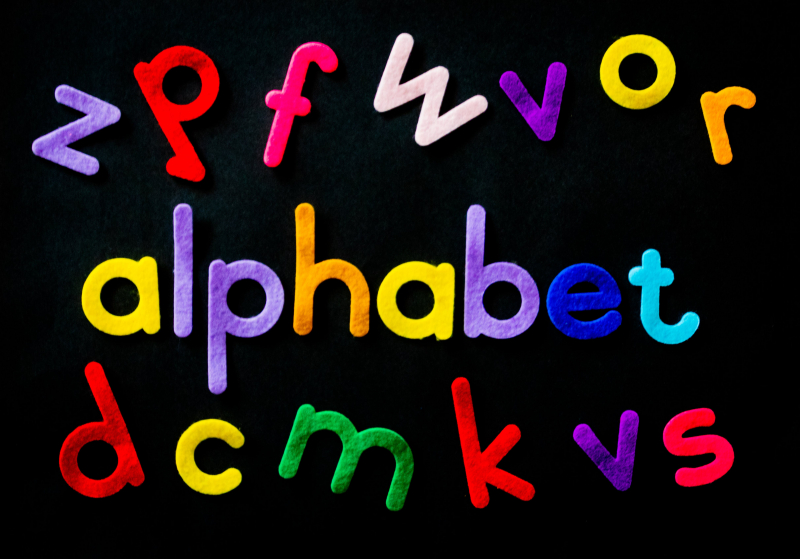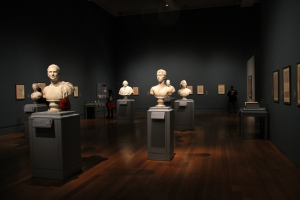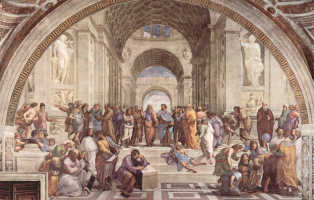Top 10 Definition Essay Examples about English & Literature
Step into the enchanting realm of English and Literature with our collection of definition essay examples. From the intricacies of grammar to the magic of ... read more...storytelling, join us in exploring the artistry of language.
-
Essay topic: Embracing the Power of Vocabulary.
Answer:
In the vast realm of language, vocabulary stands as the key to unlocking a world of expression, enabling us to communicate, connect, and articulate our thoughts. This essay embarks on a journey to explore the essence of vocabulary - a collection of words that empowers us to navigate the complexities of language with confidence.
Think of vocabulary as a toolbox filled with an array of tools, each word serving a specific purpose. It encompasses the words we use to convey ideas, express emotions, and engage in meaningful conversations. A rich vocabulary is like a palette of colors, offering nuance and depth to our expressions.
Understanding vocabulary doesn't require memorizing dictionaries; it's about gradually expanding our repertoire of words through reading, listening, and curiosity. Words are the building blocks of communication, and by embracing new words, we enrich our ability to convey precise meanings and nuances in our conversations and writings.
Vocabulary is the gateway to effective communication. Just as a painter selects brushes and colors to create a masterpiece, we choose words to craft our expressions. A diverse vocabulary allows us to articulate our thoughts clearly, whether in essays, presentations, or everyday interactions.
For high school students embarking on the journey of self-expression, building vocabulary is an empowering skill. It opens doors to a world of literature, enhances our understanding of complex topics, and equips us to express ourselves with confidence. Vocabulary is a lifelong companion, evolving and growing with us as we navigate various aspects of life.
In conclusion, vocabulary is the treasure trove of words that adds richness and precision to our language skills. As high school students, embracing the power of vocabulary is akin to unlocking a door to effective communication. By nurturing and expanding our vocabulary, we equip ourselves with a valuable tool that enhances our ability to express ideas, connect with others, and thrive in the diverse landscapes of language.

Photo by Pixabay via pexels 
Photo by Markus Winkler via pexels -
Essay topic: Exploring the Basics of Grammar.
Answer:
In the vast landscape of language, grammar stands as the essential framework that allows us to communicate effectively and express our thoughts with clarity. This essay embarks on a journey to unravel the basics of grammar - a set of rules and structures that form the foundation of our ability to convey meaning through words.
Imagine grammar as the blueprint for constructing sentences, much like building blocks that fit together to create a coherent message. It encompasses the rules governing the arrangement of words, the formation of sentences, and the usage of punctuation marks, ensuring that our expressions make sense to others. Grammar is the toolbox that equips us with the skills needed to convey our ideas accurately.
Understanding grammar doesn't require memorizing complex rules; it's about recognizing the patterns and structures that make our language flow smoothly. Grammar helps us distinguish between "I write" and "I wrote," conveying different timelines with a simple adjustment of verb forms. It guides us in forming questions, statements, and exclamations, enabling us to express a wide range of thoughts and emotions.
Grammar is like the traffic signals of language, ensuring a smooth flow of communication. Just as traffic signals guide vehicles safely through intersections, grammar rules guide words through sentences to convey meaning without confusion. When we follow the rules of grammar, our writing becomes a clear and accessible pathway for readers to understand our thoughts.
For high school students navigating the complexities of language, understanding grammar enhances our ability to express ourselves effectively. It's a tool that empowers us to communicate ideas, share stories, and engage in meaningful conversations. Embracing the basics of grammar is akin to mastering the alphabet - it opens doors to confident and articulate communication.
In conclusion, grammar is the unsung hero that underlies our ability to communicate with precision and coherence. As high school students, appreciating the fundamentals of grammar enriches our language skills, paving the way for confident and effective expression in both written and spoken communication.

Photo by Tima Miroshnichenko via pexels 
Photo by Thirdman via pexels -
Essay topic: Embracing the Beauty of Poetry.
Answer:
In the vast realm of literature, poetry stands as a vibrant tapestry woven with words, creating a unique and expressive form of artistic expression. This essay embarks on a journey to explore the essence of poetry - a medium that paints emotions, images, and ideas using language in a way that goes beyond the ordinary.
Picture poetry as a form of art where words become colors, and verses transform into strokes on the canvas of emotions. Unlike prose, which follows a straightforward narrative, poetry is a dance of rhythm and imagery, inviting readers to experience language in a more heightened and nuanced manner.
Poetry is like a musical composition made of words. It often features rhyme, rhythm, and metaphor, turning language into a symphony that resonates with emotions. When poets use metaphors like "the world is a stage" or employ rhythmic patterns like rhyming couplets, they create a unique cadence that enhances the emotional impact of their words.
Reading poetry is akin to stepping into a garden of words, where each verse is a bloom with its own fragrance and beauty. It allows readers to explore emotions, ideas, and perspectives in a condensed and evocative form. Poetry captures the essence of a moment, freezes it in words, and presents it as a gift to the reader's imagination.
For high school students entering the world of literature, understanding poetry adds a layer of richness to language appreciation. It's an exploration of emotions and a discovery of the power of words to create vivid images and convey profound feelings. Poetry invites us to see language as an art form, encouraging creativity and personal expression.
In conclusion, poetry is the art of expressing the inexpressible, the dance of words that transcends the ordinary. As high school students, embracing the beauty of poetry enriches our literary experiences, allowing us to delve into the imaginative and emotional realms crafted by the delicate strokes of language on the canvas of the human soul.

Photo by Pixabay via pexels 
Photo by KoolShooters via pexels -
Essay topic: Enchanting Narratives: Understanding the Magic of Fairy Tales.
Answer:
In the realm of storytelling, fairy tales emerge as timeless narratives that whisk readers away to fantastical worlds filled with magic, wonder, and moral lessons. This essay embarks on a journey to explore the essence of fairy tales - a genre that has captivated generations with its charming characters, magical settings, and enduring messages.
Imagine fairy tales as magical keys that unlock the doors to enchanting realms. These stories often feature princesses, knights, talking animals, and wicked witches, transporting readers to castles in the clouds and forests where anything is possible. Fairy tales are like windows to a world where imagination knows no bounds.
Fairy tales are more than mere entertainment; they are repositories of wisdom and life lessons. Through the trials and triumphs of characters like Cinderella, Snow White, or Little Red Riding Hood, readers encounter moral teachings about kindness, bravery, and the consequences of choices. These tales, often wrapped in the glittering cloak of fantasy, carry messages that resonate with the human experience.
Reading fairy tales is like embarking on a magical adventure where the ordinary transforms into the extraordinary. Whether it's the talking mirror in "Snow White" or the pumpkin carriage in "Cinderella," fairy tales spark the imagination and invite readers to believe in the possibility of miracles. The magic of these tales lies not only in the fantastical elements but also in the universal themes that echo across cultures and time.
For high school students delving into the world of literature, understanding fairy tales unveils the enduring appeal of these stories. It's an exploration of the universal human experiences woven into the fabric of fantastical narratives. Fairy tales teach us that, even in the face of adversity, courage and kindness can lead to happily ever afters.
In conclusion, fairy tales are the magical bridges that connect us to the wonders of imagination and the timeless lessons of humanity. As high school students, embracing the enchantment of fairy tales adds a layer of joy and wisdom to our literary adventures, inviting us to believe in the magic that resides within the pages of these captivating stories.

Photo by Josh Hild via pexels 
Photo by Ike louie Natividad via pexels -
Essay topic: Exploring the World of Sentences.
Answer:
In the language landscape, sentences serve as the fundamental building blocks that allow us to convey thoughts, share ideas, and communicate with clarity. This essay embarks on a journey to unravel the essence of sentence - a collection of words arranged in a structured order to express complete thoughts and convey meaning.
Think of sentences as the foundation of communication, much like bricks that form the structure of a building. A sentence typically consists of a subject, verb, and object, working together to create a complete idea. Whether short or long, sentences are the tools we use to articulate our thoughts and connect with others.
Understanding sentences doesn't require complicated formulas; it's about recognizing the basic elements that make up a complete thought. A sentence can be a simple statement, a question seeking information, or an exclamation expressing strong emotions. By mastering sentence construction, we gain the ability to convey a wide range of meanings and engage in meaningful conversations.
Sentences are like puzzle pieces that fit together to form coherent messages. When we arrange words in a logical order, we create sentences that guide readers through our thoughts with clarity. Just as a well-constructed paragraph enhances the flow of writing, well-crafted sentences contribute to effective communication.
For high school students navigating the complexities of language, understanding the anatomy of sentences is empowering. It's a skill that enables us to express ourselves clearly in essays, stories, and everyday conversations. Whether spoken or written, sentences are the vehicles through which we share our ideas and connect with those around us.
In conclusion, sentences are the sturdy bridges that span the gap between thoughts and words. As high school students, appreciating the importance of sentences enhances our language skills, making us effective communicators in both academic and personal contexts. Mastering the art of constructing sentences is a valuable tool on our journey of self-expression and effective communication.

Photo by RDNE Stock project via pexels 
Photo by Eva Bronzini via pexels -
Essay topic: Understanding the Magic of Literature.
Answer:
In the world of storytelling, literature stands as a captivating tapestry woven with words, offering readers a portal to diverse worlds, characters, and emotions. This essay embarks on a journey to explore the essence of literature - a realm where imagination intertwines with language, creating an immersive experience that transcends time and space.
Picture literature as a treasure trove of stories, poems, and plays, each a unique expression of human creativity. It's a vast landscape where authors paint vivid landscapes with their words, inviting readers to step into the shoes of characters, experience different cultures, and explore the depths of the human psyche. Literature is a bridge that connects us to the rich tapestry of human experiences.
Literature is more than mere words on paper; it is a reflection of the human condition. Through the lens of literature, readers encounter the complexities of love, the struggles of heroes, and the universal themes that resonate across cultures. Whether it's the tragic tale of Romeo and Juliet or the epic adventures of Harry Potter, literature provides a mirror to our own lives and offers insights into the diversity of human emotions and experiences.
Reading literature is like embarking on a literary odyssey, where each page unfolds a new chapter in the exploration of ideas, values, and the human spirit. It fosters empathy by allowing readers to see the world through different perspectives, fostering a deeper understanding of the diversity that defines our shared humanity.
For high school students delving into the world of literature, the magic lies in the exploration of different genres and styles. It's an opportunity to discover personal preferences, cultivate a love for storytelling, and develop critical thinking skills. Literature becomes a companion in the journey of self-discovery and a guide through the complexities of the human experience.
In conclusion, literature is the literary kaleidoscope that adds color and depth to our understanding of the world. As high school students, embracing the magic of literature enriches our lives, broadens our horizons, and invites us to embark on an endless journey through the enchanting realms crafted by the written word.

Photo by Pixabay via pexels 
Photo by Pixabay via pexels -
Essay topic: The Art of Everyday Language - Understanding Prose.
Answer:
In the vast landscape of literature, prose unfolds as the everyday language we encounter in stories, essays, and everyday communication. This essay embarks on a journey to unravel the essence of prose - a form of writing that embraces the natural flow of words, allowing stories and ideas to unfold in a straightforward manner.
Think of prose as the everyday conversation we have with friends or the stories we read in books without the rhythmic structure of poetry. It's the simple, unembellished language that serves as a vehicle for expressing thoughts and narrating tales in a clear and accessible way. Unlike poetry, prose doesn't rely on intricate rhyme schemes or specific meters; instead, it captures the essence of natural speech.
Prose is like a reliable friend, always there to convey information, share experiences, or tell a captivating story. When you read a novel, a newspaper article, or even a textbook, you are engaging with prose. It's the unassuming vehicle that carries the messages and narratives that shape our understanding of the world.
Understanding prose doesn't require deciphering complex structures or decoding hidden meanings. It's the language we use every day to communicate ideas, share information, and immerse ourselves in the narratives that make up our literary experiences. Whether in fiction or nonfiction, prose is the storyteller's canvas, painting pictures with words to convey emotions, facts, and perspectives.
For high school students delving into literature and language, recognizing the role of prose enhances our ability to navigate written texts with ease. It allows us to appreciate the straightforward beauty of language and encourages us to express our thoughts and stories in a clear and relatable manner.
In conclusion, prose is the unsung hero of language, the reliable companion that carries our thoughts and stories with grace. As high school students, embracing the simplicity and accessibility of prose enriches our reading experiences and empowers us to communicate effectively in the beautiful tapestry of everyday language.

Photo by Pixabay via pexels 
Photo by Judit Peter via pexels -
Essay topic: Unveiling Hidden Meanings - Exploring Symbolism.
Answer:
In the vast canvas of literature and art, symbolism emerges as a silent storyteller, using objects, colors, or ideas to convey deeper meanings beyond their literal representation. This essay embarks on a journey to unravel the essence of symbolism, a powerful tool that adds layers of significance to words, images, and expressions.
Symbolism is akin to a secret code, where certain elements carry meanings beyond what meets the eye. Rather than stating something directly, writers and artists use symbols to convey emotions, ideas, or themes indirectly. For instance, a red rose might symbolize love, while a dark storm could represent turmoil. These symbols create a rich tapestry of hidden meanings that invite readers and viewers to delve deeper into the layers of a story or artwork.
In literature, symbolism acts as a kind of visual language. It's not just about what characters say or do; it's about the deeper messages hidden in the details. Think of a dove symbolizing peace or a journey representing personal growth. These symbols enrich the narrative, offering readers a chance to interpret and connect with the story on a more profound level.
Beyond books and poems, symbolism also colors our everyday language and culture. A heart, for example, is not merely an organ but a universal symbol of love. Colors like green might represent growth or envy, depending on the context. Understanding these symbols adds depth to our communication, allowing us to convey complex ideas with simplicity.
For high school students stepping into the realm of literature, recognizing symbolism enhances the enjoyment of stories and opens doors to critical thinking. It's like having a key to unlock hidden meanings and discover the layers of significance carefully woven into the fabric of words and images.
In conclusion, symbolism is the silent language that speaks volumes beneath the surface. It transforms the ordinary into the extraordinary, adding layers of meaning to the written and visual arts. As high school students, embracing the power of symbolism enriches our understanding of literature, art, and the nuances of communication, inviting us to explore the hidden depths of the world around us.

Photo by Pixabay via pexels 
Photo by Designecologist via pexels -
Essay topic: The Magic of Metaphor.
Answer:
In the realm of language, metaphor stands as a vibrant brushstroke, transforming ordinary words into vivid images and ideas. This essay embarks on a journey to unveil the enchanting world of metaphor - a literary device that paints pictures with words, creating imaginative connections that go beyond the literal meanings.
Imagine a metaphor as a kind of word-magic, where one thing is said to be another, not because they are the same but to highlight similarities and evoke deeper understanding. When we say "time is a thief" or "the world is a stage," we're not stating literal facts but using metaphors to convey complex ideas in a way that captivates our imagination.
Metaphors are like windows into another world, allowing us to see familiar things in fresh, unexpected ways. They are the poets' tools, the storytellers' secrets, and the artists' palette. A metaphor can turn a simple phrase into a vivid experience, like "laughter is music" or "the city sleeps." Beyond literature, metaphors pepper our everyday language, making communication more colorful and expressive. When we describe someone as having a "heart of gold" or facing a "mountain of challenges," we're using metaphors to convey qualities and situations in a way that resonates emotionally.
For high school students diving into the beauty of language, recognizing metaphors enhances our reading and writing experiences. It's a way of adding flair to our expressions, making words dance with creativity. By understanding metaphors, we not only grasp the intended meanings but also appreciate the artistry behind the words.
In conclusion, metaphor is the artist's brush in the world of language, transforming the mundane into the extraordinary. It invites us to see, feel, and understand the world in new and exciting ways. As high school students, embracing the magic of metaphor enriches our language skills, unlocking a world of creativity and imaginative expression within the tapestry of words.

Photo by Pixabay via pexels 
Photo by Timothy Paule II via pexels -
Essay topic: Breathing Life into the Inanimate - Exploring Personification.
Answer:
In the vast world of literature, personification acts as a magical wand, bestowing human qualities upon non-human entities, making the inanimate come alive with vivid characteristics. This essay embarks on a journey to unravel the essence of personification, a literary device that breathes life into the ordinary, transforming objects and ideas into relatable and engaging characters.
Personification is like a storyteller's brushstroke, painting a vivid picture by attributing human traits to things that don't possess consciousness. In simpler terms, it's making an object, an animal, or even a concept act and feel like a person. Imagine the wind whispering secrets, the sun smiling down warmly, or the flowers dancing in the breeze. These are instances where writers use personification to create a connection between the reader and the world around them.
In the realm of storytelling, personification adds a layer of enchantment. It's not just rain falling; it's tears streaming down from the sky. By giving human qualities to nature, emotions, or even abstract ideas, writers make their tales more relatable and engaging. In fairy tales, for instance, animals often talk and share wisdom, becoming characters with human-like qualities through personification.
Personification isn't confined to literature alone; it finds a home in everyday language and expressions. When we say the wind howls, we're using personification to give the wind a voice. It's a playful way to make our descriptions more vivid and imaginative, turning the ordinary into the extraordinary. For high school students diving into the world of literature, recognizing personification adds depth to reading and writing. It's a tool that allows us to see the world around us in a new light, turning the mundane into the extraordinary and infusing creativity into our expressions.
In conclusion, personification is the literary enchantment that invites us to see the world through a different lens. It transforms the ordinary into the extraordinary, making the inanimate breathe with life. As high school students, embracing the magic of personification enhances our appreciation for language, storytelling, and the art of infusing imagination into our everyday expressions.

Photo by Magda Ehlers via pexels 
Photo by Magda Ehlers via pexels































